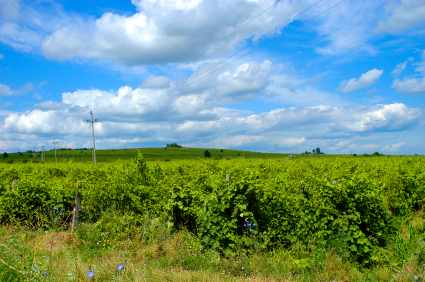
alex galmeanu – www.alexgalmeanu.ro
I recently accompanied an Executive MBA class from Kennesaw State University (Atlanta, GA) to Romania as they began a seven month international joint international residency program. In advance of travel to Romania, the Kennesaw (KSU) EMBA students thoughtfully arranged for a service project at a secondary school in Valea Călugărească, a community located in the country’s southern agricultural region. Courses in chemistry, physics and biology are important subjects in the curriculum. The region is noteworthy for its vineyards and winemaking and many students learn the science of grape growing as preparation for agricultural industry careers. KSU’s EMBA students raised money to help the school buy farming and classroom equipment. While on campus the KSU students engaged a group of nearly 100 high school students in some entertaining educational games and a presentation on American culture and business.
Learning with a Purpose
As KSU students and faculty toured the school, officials offered a background on the school and their shift in learning philosophy. During the communist era, the curriculum was designed to prepare students to move directly into manufacturing or local farming roles. Few students moved onto university for further education. After the fall of the communist regime, the educational system moved away from a vocational focus to a more “theoretical” or “academic” curriculum. This philosophy of education has remained in place until now. Recently, school officials began shifting the educational approach to one embracing a practical, applied learning philosophy. This curriculum focus will more appropriately support the aspirations of the nearly three quarters of the student body that do not go on to university but, seek employment following graduation. Selected course offerings will be continue to be available to those planning to go on to university.
Practical Learning
Although not necessarily indicative of pending change across the entire curriculum, an English language class offers a clear example of a practical learning opportunity for the students. A U.S. Peace Corps volunteer is teaching an English language class to help students learn common phrases important to navigating the basics of English in a work or other environment. His classroom walls are covered with phrases and pictures which students regularly see and practice to build a basic vocabulary and sense of confidence to communicate with English speakers. With English increasingly part of the language of multinational employers in Romania as well as other aspects of daily life, “practical” English has significant value. The school continues to offer an English language course which explores grammar, literature, written composition, history and culture for those students interested in the subject as a second language.
Time to Change How You Grow Learners?
This eight hundred student school’s changed approach to learning serves as an important lesson for leaders and professionals involved in organizational learning. As we approach the start of a new year, to what extent does your organization need a second look at its learning philosophy? Has the curriculum delivered the desired business performance results? If the answer is “not exactly”, how can learning be designed or redesigned to practically support the needs and capacity of the target employee audience? Does the learning need to be segmented or “laddered” to support different audiences with different needs? Does training delivery need to change to keep pace with learner expectations and needs? Picture this Romanian secondary school situated among orchards and vineyards and the change it is undertaking for its learners. How do you need to change how you grow your learners?